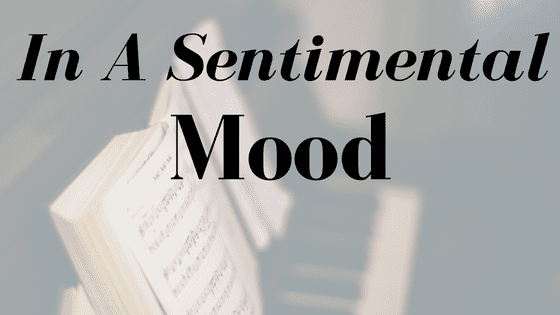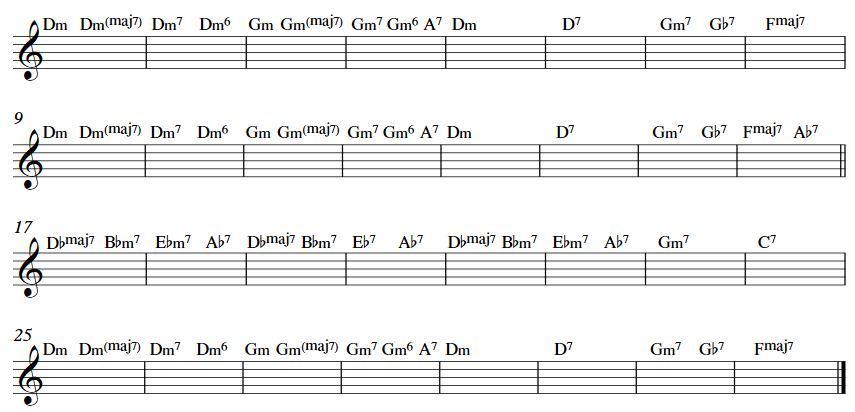In a Sentimental Mood

In a Sentimental Mood is a jazz composition by the great Duke Ellington. It has been played and recorded by many jazz artists since it was written in 1935 and has become a popular jazz standard as a result. In this article we’re going to examine certain aspects of this tune in a jazz masterclass context. By breaking down the tune we can better understand how to memorize the song, how to improvise over the chord changes, and how to create piano arrangements.
In a Sentimental Mood: Understanding the Form
Being able to quickly assess the form of a jazz standard is an important skill. In addition to recognizing the form, it’s a good idea to have a checklist of info that you look for before even going to the piano to play the tune. This checklist includes the following:
- Key signature
- Time signature
- Tempo or metronome mark (if any)
- Form (including repeats or “roadmap” symbols, such as codas or 1st/2nd endings)
In this tune, the form is a 32-bar form and is arranged in sections of 8 measures. Looking more closely we realize that this song is an AABA form, which means that the first 8 measures return for measures 9-16 and 25-32. Many jazz standards are written in this AABA form (including all “rhythm changes” tunes).
But why is this important? Consider that if 75% of the tune (24/32 measures) is comprised of the same music then you only really have to learn 16 measures (the 8-measure ‘A’ section, and the 8-measure ‘B’ section). Understanding this not only helps you organize your practice, but also makes memorizing the tune much easier.
Below are the chord symbols for "In a Sentimental Mood" showing the AABA form:
In a Sentimental Mood: Tonalities
Notice that the chord changes of the song focuses on 2 tonal centers, meaning that the song moves to two different keys which can temporarily be considered the “I” chord. The first of these tonal centers is D minor (and/or F major). Obviously, D minor and F major are related (relative major and minor) and both occur in the ‘A’ section, so they can be considered as simply one tonal center as opposed to two.
The next tonal center is Db major, which occurs during the ‘B’ section. Understanding these two tonal centers can greatly aid you when soloing. Knowing that all of the chords in this song are really coming from just two chord scales (D minor/F major and Db major) can help to simplify your approach to improvisation.
In a Sentimental Mood: Simple Arranging Approaches
Let's look at one simple yet effective example of how we might harmonize the bridge, which we know moves to the key of Db major. The bridge is basically moving in a 'I-vi-ii-V' harmonic progression, two chords per measure. In the left hand you can play the root of the chord on beat one (or beat 3) and the chord itself on beat 2 (or beat 4) creating a stride piano effect. In the right hand you can play the single-note melody, or (more effectively) you can double the melody in octaves to create a denser effect.


